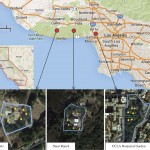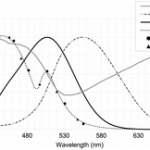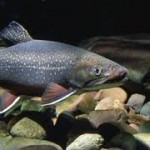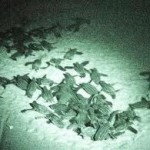 Tuning the white light spectrum of light emitting diode lamps to reduce attraction of nocturnal arthropods Travis Longcore , Hannah L. Aldern , John F. Eggers , Steve Flores , Lesly Franco , Eric Hirshfield-Yamanishi , Laina N. Petrinec , Wilson A. Yan , André M. Barroso 2015
Tuning the white light spectrum of light emitting diode lamps to reduce attraction of nocturnal arthropods Travis Longcore , Hannah L. Aldern , John F. Eggers , Steve Flores , Lesly Franco , Eric Hirshfield-Yamanishi , Laina N. Petrinec , Wilson A. Yan , André M. Barroso 2015
Abstract
Artificial lighting allows humans to be active at night, but has many unintended consequences, including interference with ecological processes, disruption of circadian rhythms and increased exposure to insect vectors of diseases. Although ultraviolet and blue light …
 LED lighting increases the ecological impact of light pollution S. M. Pawson1,3 and M. K.-F. Bader 2014
LED lighting increases the ecological impact of light pollution S. M. Pawson1,3 and M. K.-F. Bader 2014
Abstract
Recognition of the extent and magnitude of night-time light pollution impacts on natural ecosystems is increasing, with pervasive effects observed in both nocturnal and diurnal species. Municipal and industrial lighting is on the cusp of a step change where energy-efficient lighting technology is driving a shift from “yellow” high-pressure sodium vapor lamps (HPS) to new “white” light-emitting diodes (LEDs). We hypothesized that white …
 Evaluating Potential Spectral Impacts of Various Artificial Lights on Melatonin Suppression, Photosynthesis, and Star Visibility, Martin Aubé, Johanne Roby, Miroslav Kocifaj 2013
Evaluating Potential Spectral Impacts of Various Artificial Lights on Melatonin Suppression, Photosynthesis, and Star Visibility, Martin Aubé, Johanne Roby, Miroslav Kocifaj 2013
Abstract
Artificial light at night can be harmful to the environment, and interferes with fauna and flora, star visibility, and human health. To estimate the relative impact of a lighting device, its radiant power, angular photometry and detailed spectral power distribution have to be considered. In this paper we focus on the spectral power distribution. While specific spectral characteristics can be considered harmful during the night, they can be considered advantageous during the day. As an example, while blue-rich Metal Halide lamps can be problematic …
 Potential effects of artificial light associated with anthropogenic infrastructure on the abundance and foraging behaviour of estuary-associated fishes, A.Becker et al., Journal of Applied Ecology 50(1):43, 2012
Potential effects of artificial light associated with anthropogenic infrastructure on the abundance and foraging behaviour of estuary-associated fishes, A.Becker et al., Journal of Applied Ecology 50(1):43, 2012
Summary
1. Urbanization has been identified as a global threat to biodiversity. Human population growth in coastal areas, including estuaries, is expected to increase considerably in coming decades, which will result in a proliferation of infrastructure such as jetties, wharfs and marinas. This infrastructure is often associated with artificial night lighting, yet the implications of these unnatural lighting regimes for the fish fauna in coastal ecosystems are unknown. 2. We conducted novel, night-time surveys of the fish community directly adjacent to an artificial structure …
 Coastal light pollution and marine turtles: assessing the magnitude of the problem, R.L. Kamrowski et al., Endangered Species Research, 19:85, 2012
Coastal light pollution and marine turtles: assessing the magnitude of the problem, R.L. Kamrowski et al., Endangered Species Research, 19:85, 2012
Abstract
Globally significant numbers of marine turtles nest on Australian beaches; however, the human population of Australia is also heavily concentrated around coastal areas. Coastal development brings with it increases in artificial light. Since turtles are vulnerable to disorientation from artificial light adjacent to nesting areas, the mitigation of disruption caused by light pollution has become an important component of marine turtle conservation strategies in Australia. However, marine turtles are faced with a multitude of anthropogenic threats and managers need to prioritize impacts to ensure limited conservation resources can result in adequate protection of turtles. Knowledge of the extent to which nesting areas may be vulnerable to light pollution is essential …
 Conserving energy at a cost to biodiversity? Impacts of LED lighting on bats, E.L. Stone, G. Jones, S. Harris, Global Change Biology 18(8):2458, 2012
Conserving energy at a cost to biodiversity? Impacts of LED lighting on bats, E.L. Stone, G. Jones, S. Harris, Global Change Biology 18(8):2458, 2012
Abstract
Artificial lighting is a key biodiversity threat and produces 1900 million tonnes of CO 2 emissions globally, more than three times that produced by aviation. The need to meet climate change targets has led to a global increase in energy-efficient light sources such as high-brightness light-emitting diodes (LEDs). Despite the energetic benefits of LEDs, their ecological impacts have not been tested. Using an experimental approach, we show that LED street lights caused …
 Reducing the ecological consequences of night-time light pollution: options and developments, K.J. Gaston et al., Journal of Applied Ecology 49(6):1256, 2012
Reducing the ecological consequences of night-time light pollution: options and developments, K.J. Gaston et al., Journal of Applied Ecology 49(6):1256, 2012
Summary
Much concern has been expressed about the ecological consequences of night-time light pollution. This concern is most often focused on the encroachment of artificial light into previously unlit areas of the night-time environment, but changes in the spectral composition, duration and spatial pattern of light are also recognized as having ecological effects. Here, we examine the potential consequences for organisms of …
